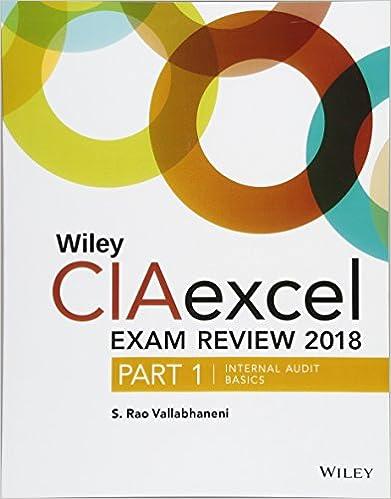Question
Two transactions for a sole proprietorship were made during the current year. These were the only sales or exchanges of capital assets or Sec. 1231
Two transactions for a sole proprietorship were made during the current year. These were the only sales or exchanges of capital assets or Sec. 1231 assets (there were no unrecaptured Sec. 1231 losses from the previous year).
A machine used in the business was sold for $40,000. It cost $33,000 when purchased 3 years ago, and its adjusted tax basis when sold was $21,000. Depreciation had been recorded on an accelerated basis; straight-line depreciation would have been $9,900.
A $50,000 insurance recovery on a small warehouse destroyed by fire was received. It was used in the business and depreciated using the straight-line method. Its adjusted tax basis at the date of the fire was $52,400. A new warehouse was rebuilt at a cost of $60,000.
| What is the basis of the new warehouse? | |
| A. | $60,000 |
| B. | $62,400 |
| C. | $57,600 |
| D. | $52,400 |
| Bob sold securities in Year 1. The sales resulted in a capital loss of $7,000. He had no other capital transactions. He and his wife Gloria decide to file separate returns for Year 1. His taxable income was $26,000. What amount of capital loss can he deduct on his Year 1 return and what amount can he carry over to Year 2? | |
| A. | $7,000 in Year 1 and $0 carry over to Year 2. |
| B. | $1,500 in Year 1 and $5,500 carry over to Year 2. |
| C. | $4,000 in Year 1 and $3,000 carry over to Year 2. |
| D. | $3,000 in Year 1 and $4,000 carry over to Year 2. |
Two transactions for a sole proprietorship were made during the current year. These were the only sales or exchanges of capital assets or Sec. 1231 assets (there were no unrecaptured Sec. 1231 losses from the previous year).
A machine used in the business was sold for $40,000. It cost $33,000 when purchased 3 years ago, and its adjusted tax basis when sold was $21,000. Depreciation had been recorded on an accelerated basis; straight-line depreciation would have been $9,900.
A $50,000 insurance recovery on a small warehouse destroyed by fire was received. It was used in the business and depreciated using the straight-line method. Its adjusted tax basis at the date of the fire was $52,400. A new warehouse was rebuilt at a cost of $60,000.
| What is the combined tax effect of these two transactions on the proprietors Form 1040? | |
| A. | $7,000 long-term capital gain; $12,000 ordinary income; and $2,400 ordinary loss. |
| B. | $19,000 long-term capital gain and $2,400 ordinary loss. |
| C. | $4,600 long-term capital gain and $12,000 ordinary income. |
| D. | $7,000 long-term capital gain and $9,600 ordinary income. Could you help explain too please, Thank you |
Step by Step Solution
There are 3 Steps involved in it
Step: 1

Get Instant Access to Expert-Tailored Solutions
See step-by-step solutions with expert insights and AI powered tools for academic success
Step: 2

Step: 3

Ace Your Homework with AI
Get the answers you need in no time with our AI-driven, step-by-step assistance
Get Started


